What Is a Thermal Label Printer?
A thermal label printer uses heat to transfer ink or create patterns on labels. It is designed to produce durable, high-quality labels at a fast pace. These printers are commonly used in industries like shipping, retail, healthcare, and manufacturing. They are favored for their efficiency and reliability in label printing tasks.
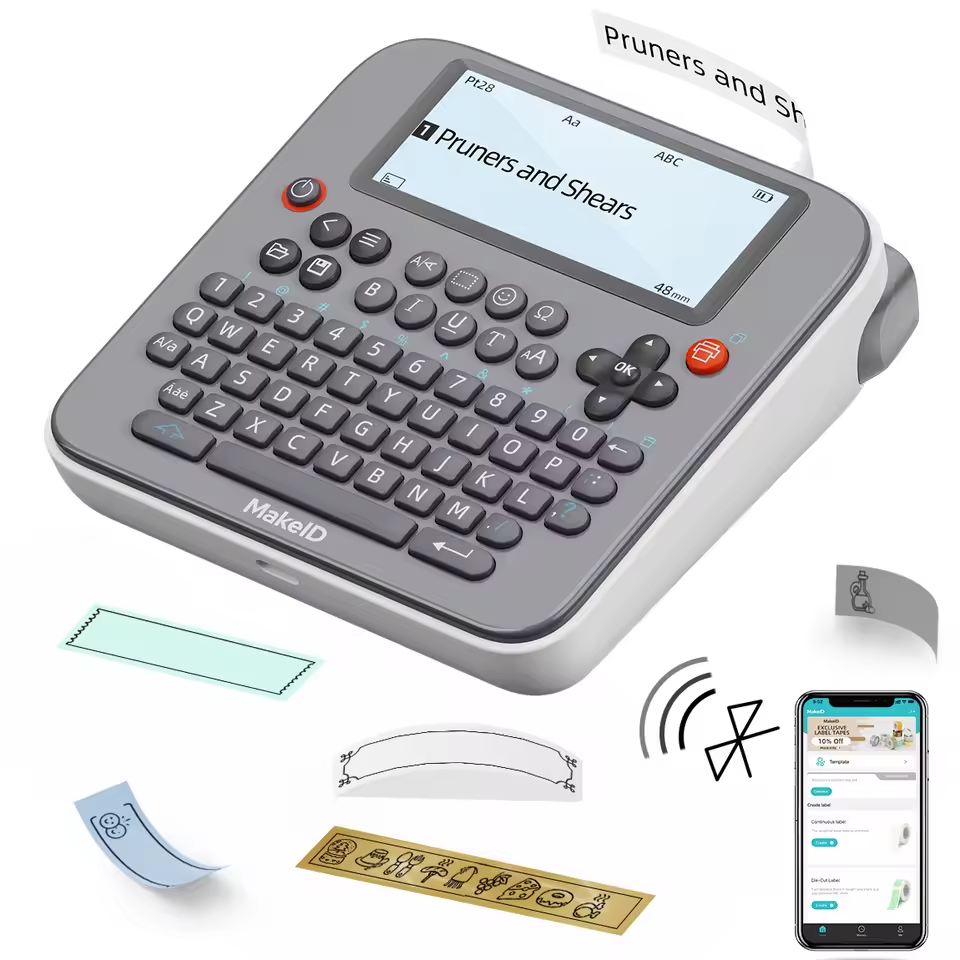
How Thermal Label Printing Works
Thermal printing technology uses heat to produce text, images, or barcodes on labels. There are two main methods:
- Direct Thermal Printing: This method applies heat directly to thermal-sensitive label surfaces. It does not use ink or toner, making it low-cost but susceptible to fading.
- Thermal Transfer Printing: In this process, heat melts a ribbon’s ink onto the label. It creates long-lasting prints and works on various materials.
Both methods produce precise, clean labels, ideal for professional and industrial use.
Advantages of Using Thermal Label Printers
Thermal label printers have unique benefits:
- Cost Efficiency: They require fewer consumables, like ink and toner, reducing operational costs.
- Durability: Labels resist fading, scratches, and water damage, especially with thermal transfer printing.
- Speed: These printers deliver fast, consistent performance, great for high-volume tasks.
- Ease of Use: Minimal maintenance and straightforward operation make them user-friendly.
These advantages make thermal label printers a smart choice for businesses that need high-quality labels regularly.
Key Features to Look for in a Thermal Label Printer
Choosing the right thermal label printer requires understanding critical features that enhance utility and performance. Below are the main factors to consider: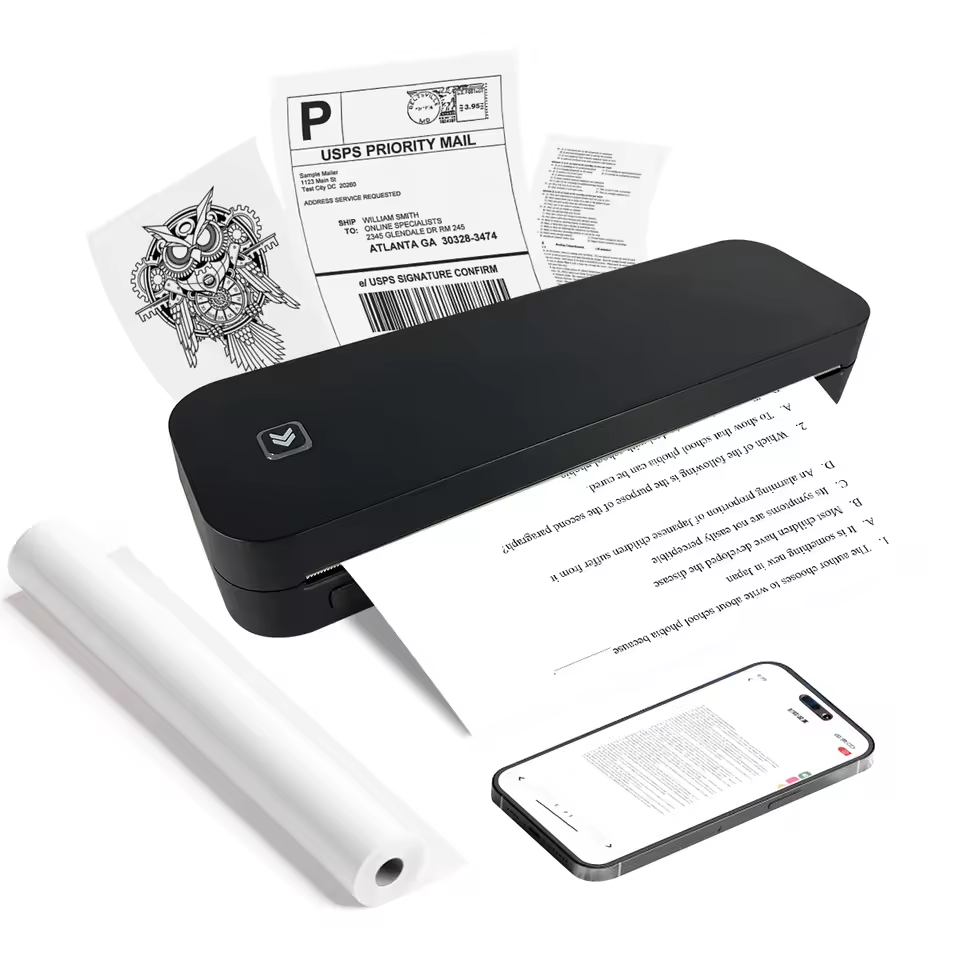
Print Speed and Quality
Print speed determines how quickly labels are generated. Faster printers are ideal for high-volume tasks. However, quality should not be compromised for speed. Look for a printer that delivers clear, sharp, and professional-quality labels. Both text and barcodes must remain legible for long-term use.
Connectivity Options (USB, Wi-Fi, Bluetooth)
A thermal label printer’s connectivity options can significantly affect its accessibility. USB connectivity is standard and ideal for direct connections to a computer or device. Wi-Fi allows wireless operations, making it convenient in multi-user environments. Bluetooth connectivity is great for quick pairing with mobile devices, enabling on-the-go printing.
Compatibility with Label Sizes and Materials
Your printer must support the label sizes and materials you need. For instance, shipping labels often require larger sizes, while retail tags or barcode labels may require smaller dimensions. Additionally, ensure the printer can handle different material types, such as paper, synthetic materials, or specialized adhesive labels. This flexibility will allow for diverse applications and durability.
Types of Thermal Label Printers
Understanding the types of thermal label printers helps you choose the right one for your needs. Below are the main categories and their unique features.
Direct Thermal vs. Thermal Transfer Printers
Direct Thermal Printers: These printers create labels by applying heat directly to thermal-sensitive surfaces. They don’t require ink or toner, making them cost-effective. However, their labels are prone to fading and are less durable in extreme conditions.
Thermal Transfer Printers: These printers use heat to transfer ink from a ribbon onto the label material. Labels made this way are longer-lasting and resistant to water, scratches, and fading. They work well on a variety of materials, offering greater flexibility.
Desktop vs. Industrial Models
Desktop Printers: Compact and lightweight, desktop printers are ideal for small to medium tasks. They save space and are perfect for retail, healthcare, or office environments.
Industrial Printers: Designed for heavy-duty, large-scale printing, these models are robust and durable. They suit warehouses or manufacturing hubs that require high-speed, high-volume label generation.
Mobile Thermal Label Printers
Mobile Printers: Portable and battery-operated, mobile printers allow on-the-go label creation. They are lightweight and designed for use in environments like logistics, fieldwork, or maintenance tasks. Their connectivity options, like Bluetooth, make them highly versatile for mobile applications.
Top Uses for Thermal Label Printers
Thermal label printers are versatile tools used across various industries. Their precision and durability make them ideal for tasks requiring clear and professional labeling. Below are some of their top applications.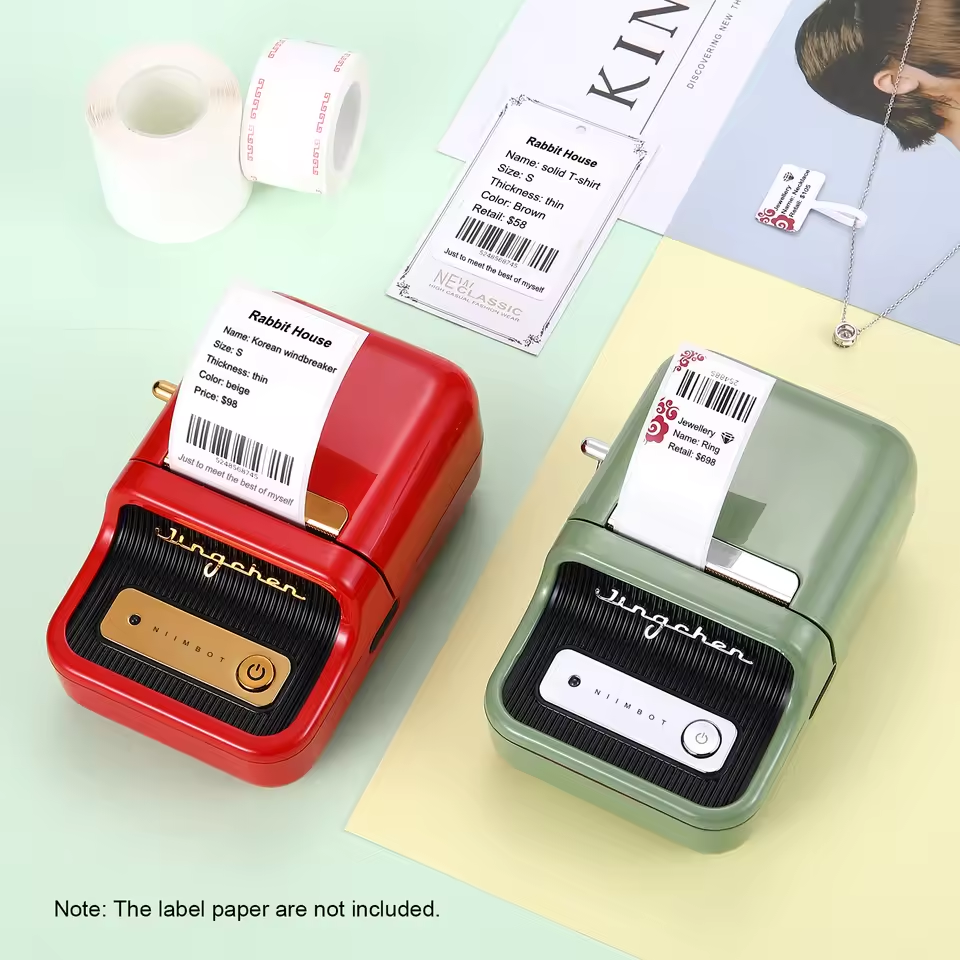
Shipping and Logistics
Thermal label printers are commonly used in shipping and logistics. They create shipping labels with barcodes, addresses, and other essential details. These labels are durable, resisting wear during transit. Thermal printers also support high-volume printing, making them perfect for busy warehouses. Their consistent performance ensures that packages can be tracked efficiently without label errors.
Retail and Product Labeling
Retail businesses rely on thermal label printers for product labeling. These labels include price tags, barcodes, and item descriptions. Direct thermal printers are cost-effective for temporary labels, while thermal transfer printers offer lasting labels. Thermal printers adapt to different label sizes, supporting branding needs and product organization.
Healthcare and Pharmacy Applications
In healthcare, thermal label printers are used for labeling medical files, prescriptions, and patient wristbands. The durable labels ensure critical information isn’t lost or smudged. Pharmacies benefit from thermal printers for precise labeling of medicines, ensuring safety and compliance. Their speed also matches the fast-paced environment of medical institutions.
Thermal label printers provide industry-specific solutions, bridging efficiency and reliability across diverse applications.
Benefits of Investing in a Thermal Label Printer
Thermal label printers have become essential tools in many industries. They offer reliability, speed, and cost efficiency. Let’s explore why investing in one is a wise decision.
Cost Effectiveness and Durability
Thermal label printers save money by using fewer consumables like ink or toner. Direct thermal printers eliminate ink usage completely. Additionally, thermal transfer printers produce durable labels that resist water, scratches, and fading. This durability reduces the need for frequent reprints, lowering long-term expenses. Their ability to handle long printing runs also makes them economical for businesses needing high output.
Ease of Maintenance and Operation
Thermal label printers are designed for simple and efficient use. They require minimal maintenance due to fewer moving parts. This reduces downtime and ensures continuous operation. Most models come with user-friendly interfaces and straightforward loading mechanisms for labels. Training staff becomes easier, especially in fast-paced environments. Their plug-and-play functionality also integrates seamlessly with various devices.
Environmentally Friendly Printing Options
Thermal label printers support green printing practices. Direct thermal printing eliminates the use of cartridges, reducing waste. Thermal transfer ribbons are also recyclable in many cases. Their efficient energy usage contributes to a smaller carbon footprint. Businesses can label products without compromising their sustainability goals. By investing in a thermal label printer, companies align with eco-friendly practices while maintaining productivity.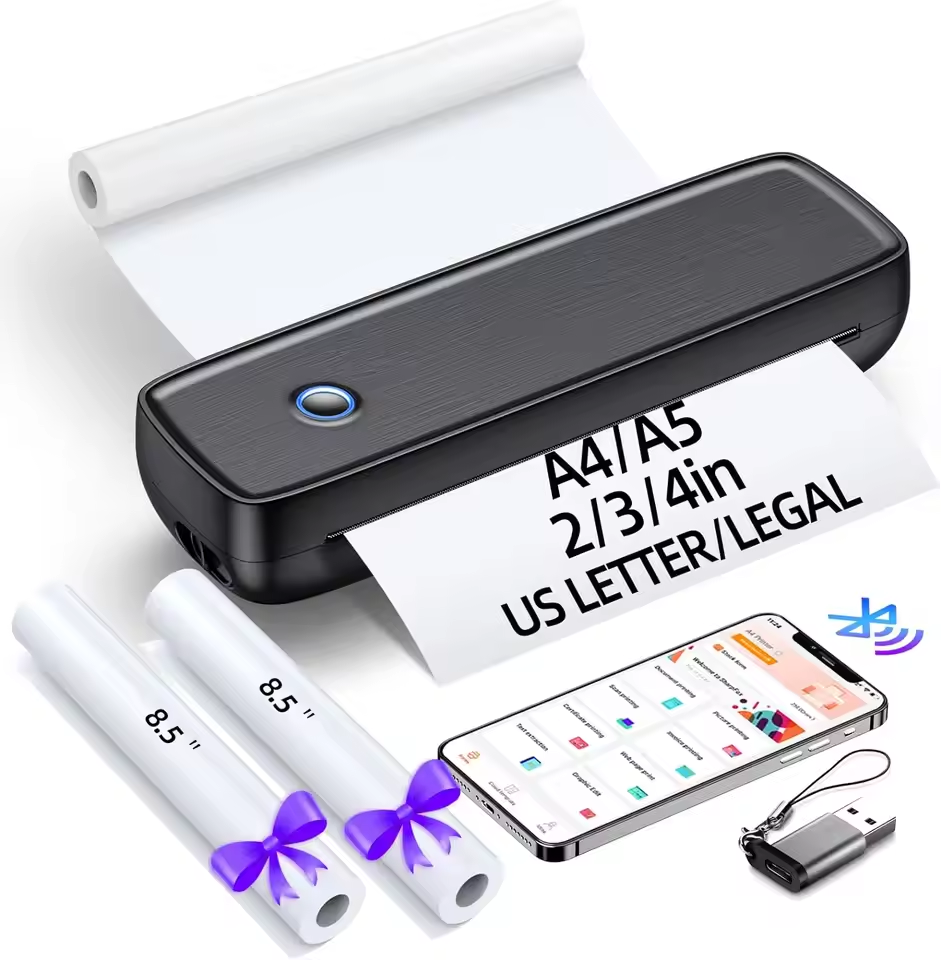
Popular Thermal Label Printer Brands and Models
Thermal label printers come in various brands and models, catering to different needs. Below are some of the most popular options, known for their reliability and efficiency.
Zebra Printers
Zebra printers are industry leaders in thermal label printing. They are renowned for their durability and high performance. These printers support various applications, including retail, logistics, and healthcare. Zebra models range from compact desktop printers to powerful industrial models. Many offer advanced connectivity options like Bluetooth, Wi-Fi, and Ethernet. They also come with software that ensures seamless integration with systems. Zebra printers are ideal for businesses needing consistent, high-quality outputs.
DYMO Thermal Printers
DYMO thermal printers are popular for their affordability and ease of use. They excel in creating small labels for office, retail, and home use. DYMO printers are compact, making them great for limited spaces. Models like the DYMO LabelWriter are perfect for address labels and barcodes. These printers are user-friendly and require minimal setup. They also support direct thermal technology, eliminating the need for ink or ribbons. Businesses looking for cost-effective and straightforward solutions often choose DYMO.
Brother Label Printers
Brother label printers are versatile and reliable, suitable for a variety of industries. They offer both desktop and portable models. Brother printers are known for their sharp print quality and consistent performance. Many models provide wireless connectivity options and mobile compatibility. They are particularly excellent for retail and healthcare labeling needs. Portable models enable easy on-the-go printing. Brother’s reputation for durable devices ensures their printers can withstand long-term use. These printers are a strong choice for businesses seeking flexible and resilient options.
How to Choose the Right Thermal Label Printer for Your Needs
Selecting the right thermal label printer ensures efficient operations and meets your specific requirements. Below are key considerations that help streamline your decision-making process.
Assessing Your Printing Volume
The volume of printing your business needs is crucial to choosing the right printer. High-volume environments, such as warehouses or manufacturing hubs, require industrial thermal label printers. These models are designed for rapid and large-scale label production. For moderate usage, such as in retail or healthcare, desktop printers are often a better fit. If portability is important, consider mobile printers for on-the-go tasks like fieldwork.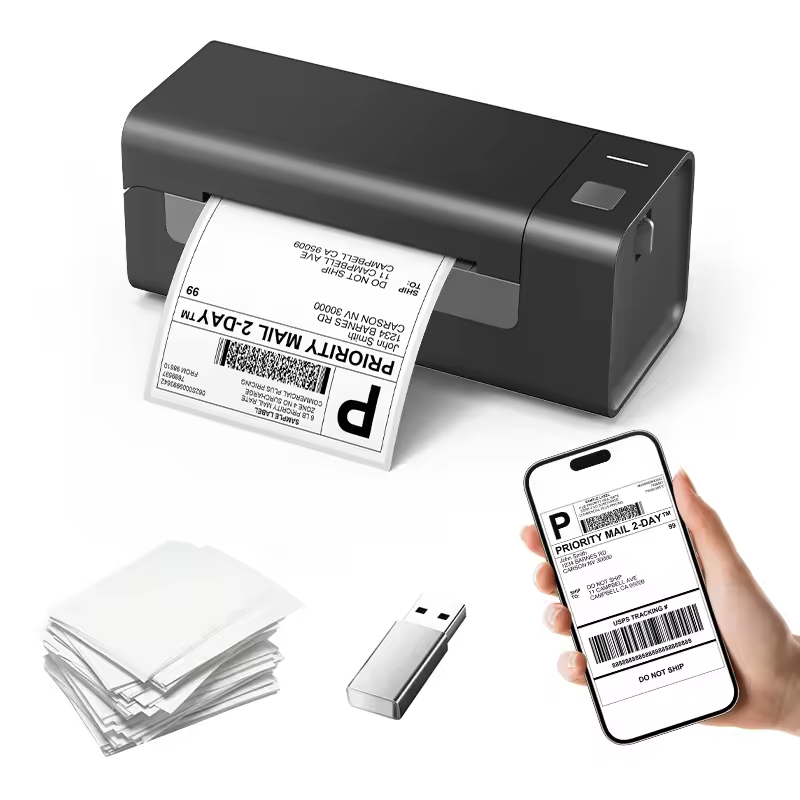
Considering Your Budget
Budget constraints play a significant role in your decision. Direct thermal printers are cost-effective as they don’t require ink or ribbons. Thermal transfer printers are more durable but involve additional costs for ribbon consumables. While industrial models are more expensive upfront, their high durability and performance justify long-term savings. For businesses with small budgets, DYMO or Brother desktop printers can offer affordable options without compromising quality.
Matching Printer Features to Specific Applications
The features of the printer should align with your specific needs. For example, if mobility is necessary, choose a portable thermal label printer with Bluetooth connectivity. If you require different label types, select a printer compatible with various sizes and materials. Retail businesses may prioritize smaller labels, while shipping requires larger sizes. High connectivity options, such as Wi-Fi and Ethernet, are particularly beneficial for multi-user environments. If durability is essential, thermal transfer printing should be considered for longer-lasting labels.
By assessing these factors, you can ensure the thermal label printer you select fits your unique operational needs.
